Carpeting plants are a great addition to any aquarium. Their lush greenery looks great. And they also provide food and hiding places for bottom-feeders, fry, and smaller critters like shrimp.
There are lots of different kinds to choose from, depending on what effects and nutrients you want to provide. And different plants need varying levels of care to thrive.
We’ve brought together a list of the 12 best carpeting plants for an aquarium. And we’re going to tell you everything you need to know about their characteristics and how to care for them.
Ready? Let’s dive in!
Best Carpeting Plants for an Aquarium
1. Java Moss

Java Moss, or Taxiphyllum barbieri, to give it its Latin name, originates from South East Asia. And it’s one of the easiest, most effective and cheapest carpeting plants out there.
It will grow on pretty much any surface, from rocks and driftwood to gravel. It will even grow on the surface of the water.
It’s a freshwater plant, and it’s happy in a wide range of conditions. It likes a neutral pH of between 5 and 8, and a temperature of between 60 and 80 degrees Fahrenheit.
It doesn’t require an expensive lighting set-up, either, because it’s used to growing in shady conditions. Between 8 and 10 hours of moderate or dim tank lighting will be quite sufficient.
It grows in clumps, at a rate of about 1 to 1.5 inches per month. The height of up to 4 inches can give you an attractive, lawn-like appearance at the bottom of your tank. Young moss is a bright, fresh green, becoming darker as it matures.
Aside from its esthetic appeal, it also provides a great place for fish to lay their eggs. And when the fry emerge, they’ll find a plentiful supply of infusorians to feed on.
2. Cryptocoryne parva
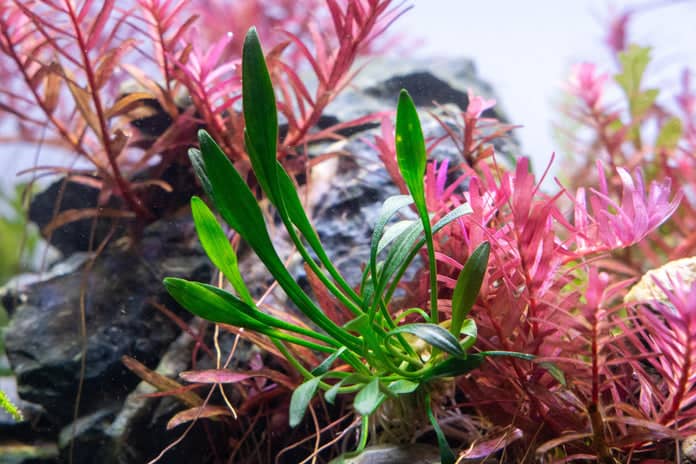
The genus Cryprocoryne provides lots of different aquarium plants. This one is the smallest of the lot, with a height of 1 to 2.5 inches, and a spread of between 2 and 3 inches. Once it’s reached its full height, it never needs trimming, making it very low maintenance.
It has attractive bladed leaves. And if you plant some an inch or two apart, you’ll get a beautiful, cohesive carpet in about six months. It’s a lovely option to add interest to the foreground of your aquarium.
It does, though, require the right conditions to grow well. In particular, it needs plenty of light or the leaves will disappear. That means it shouldn’t be overshadowed by taller plants.
And like all members of the Cryptocoryne genus, it requires lots of feeding through its roots. You’ll get the best results if you plant it in a nutrient-rich aquatic compost.
3. Hemianthus callitrichoides
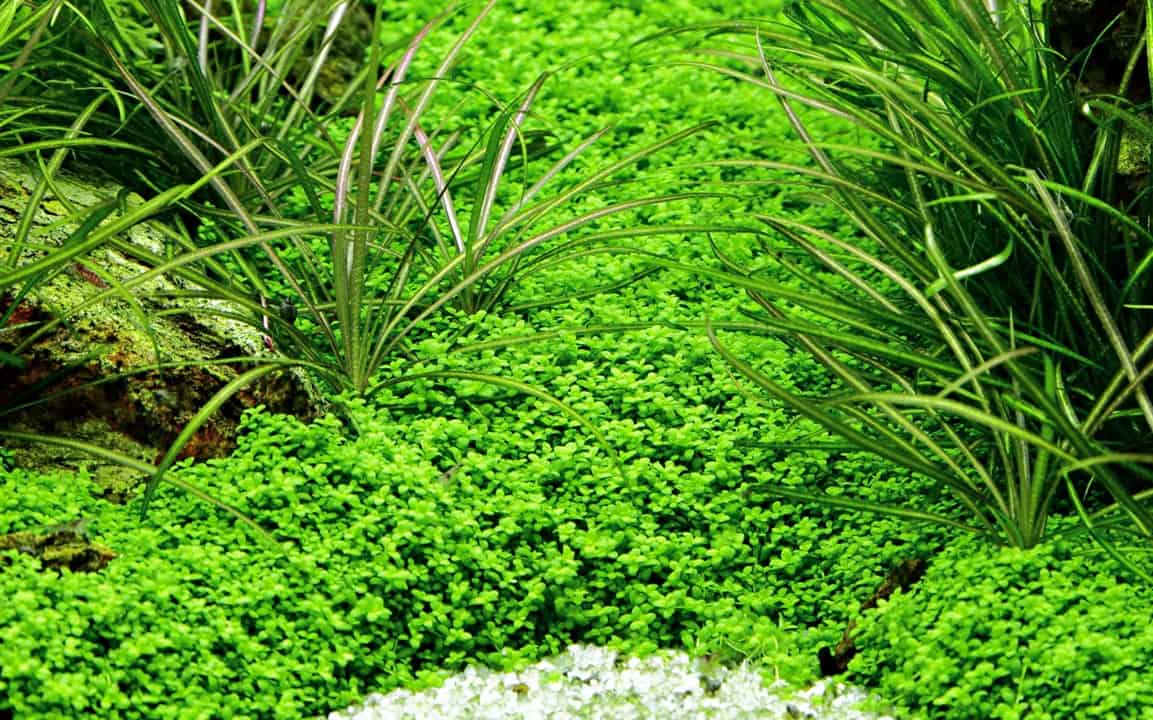
If you’re a confident keeper of aquatic plants, Hemianthus callitrichoides is a beautiful option. It has tiny leaves which – in the right conditions – will form a dense, lush carpet. And the leaves give off bubbles of oxygen in a process known as “perling”, creating another attractive feature.
It is, however, quite demanding. It performs best in tanks with lots of light – ideally 1 watt per liter of water. It can survive with lower light levels, but you’ll get slower and less dense growth.
It likes temperatures of between 68 and 86 degrees Fahrenheit, and a pH of between 6 and 8. And it will need plenty of carbon dioxide too.
Because the leaves are so tiny, it’s a good option for making a smaller aquarium look grander. And if you’ve a high-tech set-up capable of creating the right conditions, it’s well worth trying out.
4. Postogemon helferi
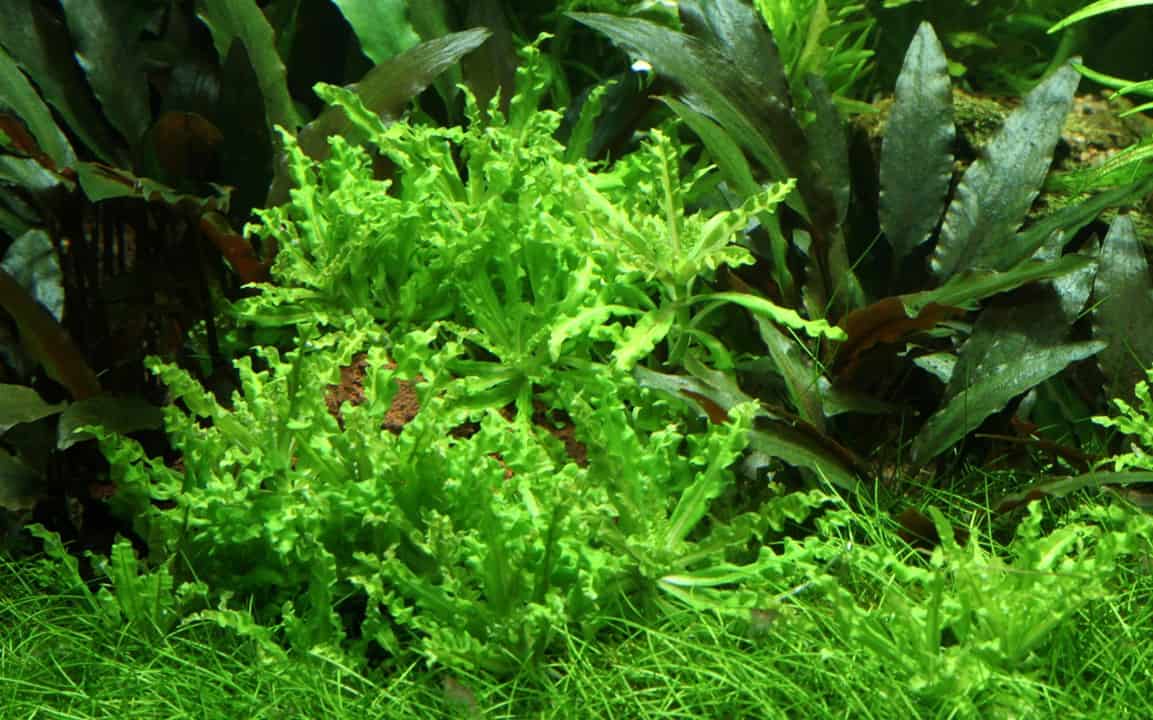
The lovely Postogemon helferi has crinkly green leaves which curl out from the center of the plant. The result is a shape like a sea anemone.
That makes it a lovely specimen plant when positioned between rocks. But if you place several of them close together, they’ll also form a dense and very attractive carpet.
It will grow happily on either substrate or wood. Plant it in small portions about 1.5 inches apart. Keep an eye on it as it develops and snip away any decaying leaves. That will encourage new growth.
You’ll get the thickest carpet with lots of light, nutrients and carbon dioxide. The plants grow taller in lower light as they search out the sun. And any yellow leaves are most likely a sign that you need to increase the nutrient levels in the water.
5. Eleocharis acicularis “Mini”
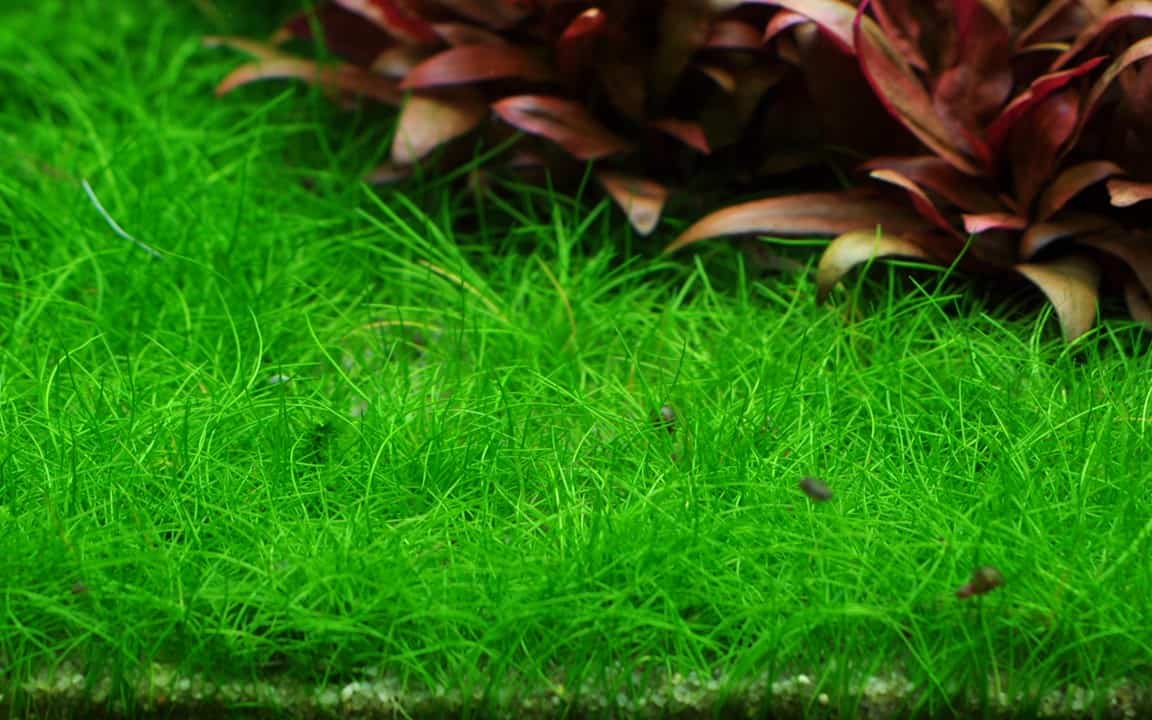
Also known as “Dwarf Hair Grass”, the “Mini” variant of Eleocharis acicularis is a great carpeting plant for a small aquarium.
It stays at a height of between 1 and 2 inches with the minimum of maintenance. And as long as it has plenty of light, it will grow lush and green. If the light levels are too low, though, it will grow too tall for a carpeting plant.
It likes plenty of nutrients too, so test your water regularly. Adding carbon dioxide, liquid plant food or root tabs will give it the best chance of success.
It works best planted in lots of tiny portions across a large area. Place it directly into your substrate or coarse sand, and then just sit back and watch it grow! You’ll be rewarded with an attractive and finely bladed carpet – like a bowling green for the bottom of your tank.
6. Glossostigma elatinoides
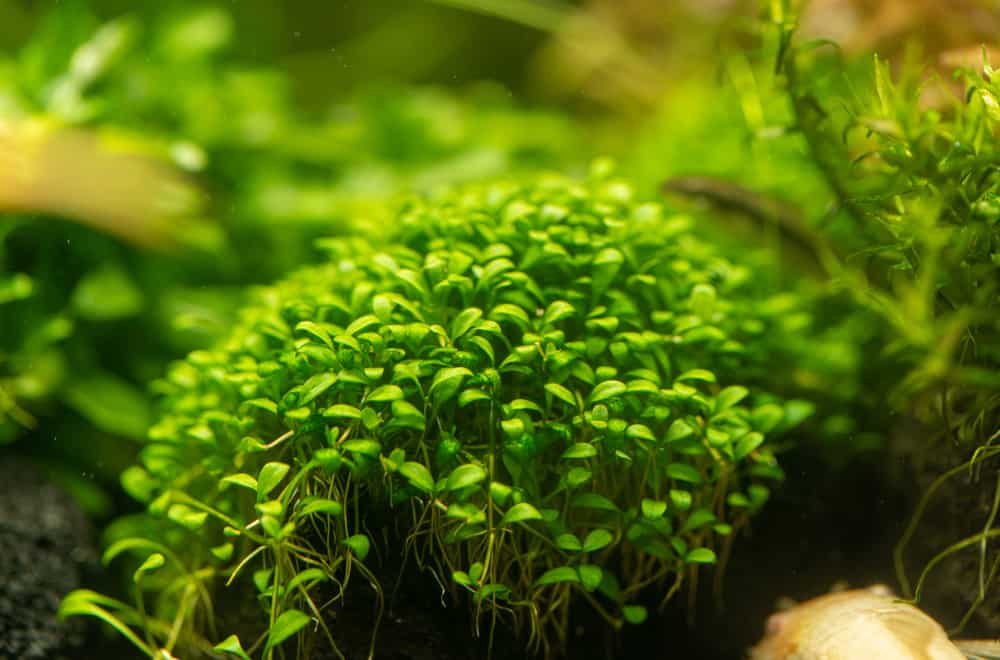
This lovely carpeting plant looks great in Japanese-inspired aquariums. But growing it isn’t for the faint-hearted.
When it comes to conditions, it has exacting requirements. It likes high levels of light, or it will grow tall and straggly. So you’ll need a good lighting apparatus, and avoid any taller plants overshadowing it.
It’s best planted in small clumps around 1.5 to 2 inches apart. It will grow best with an additional supply of carbon dioxide. And it likes plenty of nutrients and soft water too.
It’s also fussy about temperature and pH. The former needs to be between 72 and 82 degrees Fahrenheit, and the latter between 6 and 7.
Get all of that right, and it will grow quickly. Several weeks after planting, it will have developed into an attractive, bright green carpet about an inch tall.
And it’s another plant that can develop oxygen bubbles on its leaves. These will reflect the light beautifully in your tank.
7. Helanthium tenellum “Red”
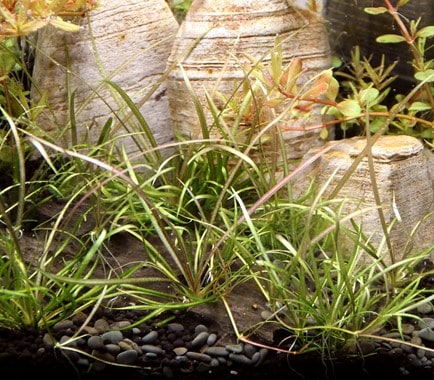
You may also hear this plant referred to as Echinodorus tenellus. It’s more usually considered a foreground than a carpeting plant. But if you cut it back vigorously, it can form an attractive and dense green carpet for your aquarium.
It comes from America and it’s another plant that needs plenty of light. It thrives in temperatures between 61 and 82 degrees Fahrenheit, and will cope with a pH of between 5 and 8.
It’s not fussy about water hardness, and will grow in anything from very soft to hard water. It likes between 20 and 30 milligrams of carbon dioxide per liter of water. And it has a medium growth rate and a maximum height of 1 to 2 inches.
But what about the “Red” in its name?
That refers to the color of the leaves in certain lighting conditions. When there’s plenty of light, they develop into a violet-red shade. If you’re keeping the plant well-trimmed though, the growth is more likely to stay green.
8. Hydrocotyle tripartita “Japan”
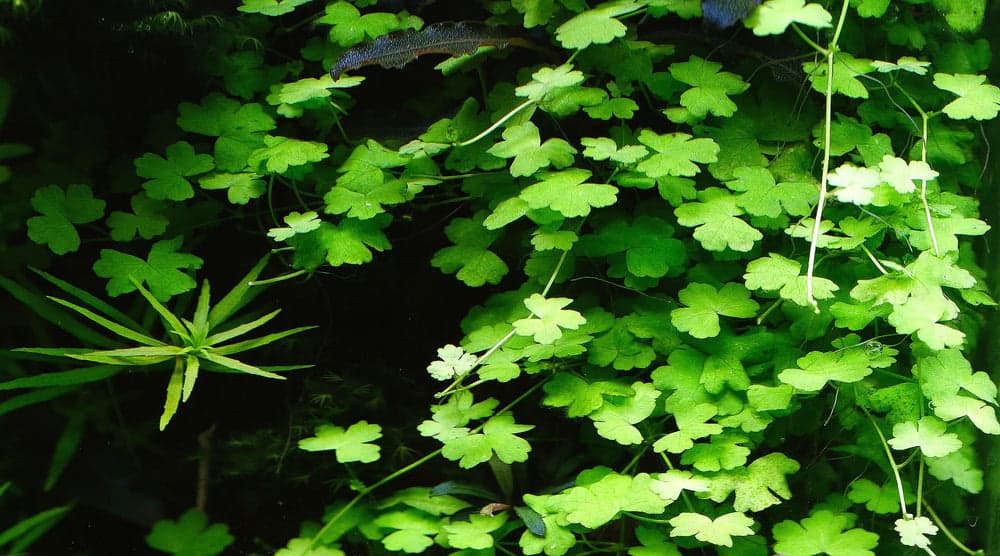
This elegant Hydrocotyle tripartita “Japan” is one of the most popular varieties of carpeting plants out there.
It comes from South East Asia. The leaves are small, vivid green, and carried on upright stems. It will form a carpet between 2 and 4 inches high. And you can help keep it short by the simple process of pressing down on it with your hand. (That’s known as “mechanical retardation”.)
After a few pruning cycles, it will develop into a lovely, dense carpet. You’ll get particularly compact growth in good levels of light.
It can be grown in tanks with or without additional carbon dioxide injection. But you’ll get a denser carpet with extra CO2.
In the right conditions, it’s a vigorous grower. You may even find you need to cut it back to keep it in check. For that reason, you might prefer growing it in a hard substrate over aquatic compost.
9. Lilaeopsis brasiliensis
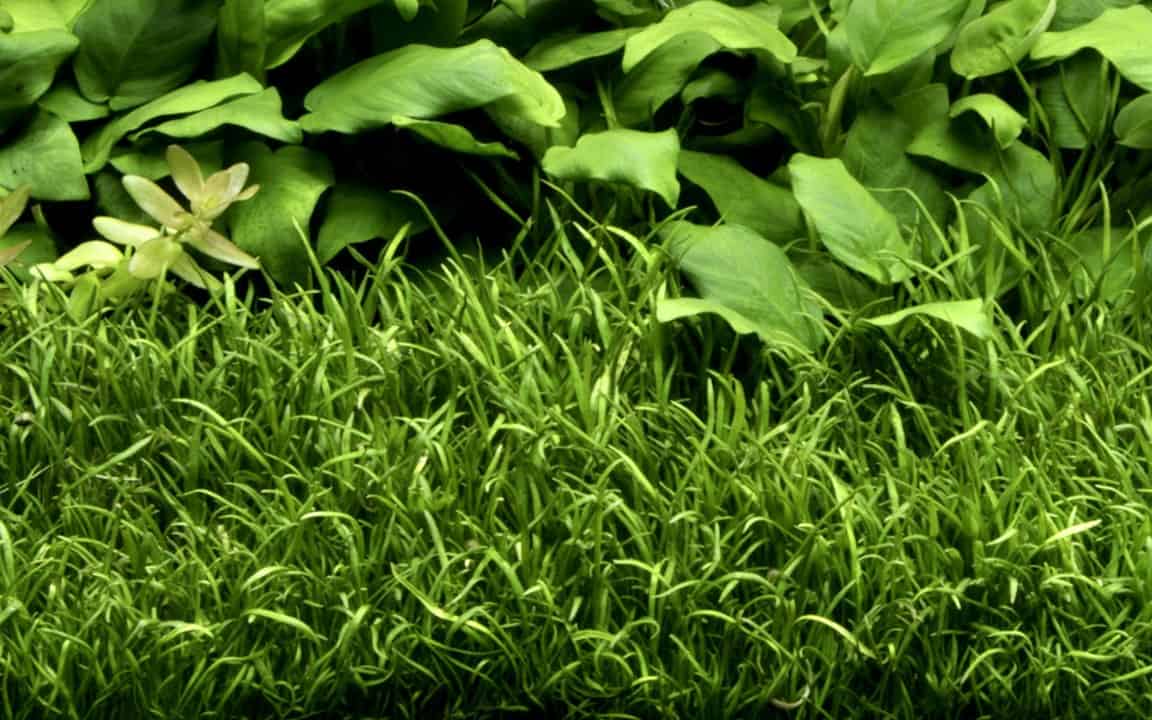
Lilaeopsis brasiliensis, or the Brazilian Micro-Sword, is a great option if you’re looking for a carpeting plant for brackish water.
As the name suggests, it hails from Brazil, where it grows along the banks of streams and rivers. Grow it an aquarium, and you’ll need to get the right mix of lighting, carbon dioxide and nutrients. If you do, you’ll be rewarded with an attractive carpet that will grow up to 3 inches tall.
But what is the right mix?
Well, it needs a temperature of between 70 and 82 degrees Fahrenheit. It will cope with water that’s soft through to moderately hard. And it needs a pH of between 6.8 and 7.5.
It needs to be planted in a substrate that’s rich in nutrients. And you’ll need about 3 watts per gallon of light – ideally focused directly on the plant. Although it can survive in lower light levels, you’ll get slower and straggly growth.
If you want the lushest and most dense carpet, you’ll need to supplement the carbon dioxide in your tank. Getting the right carbon dioxide levels can be difficult, so this is a plant best taken on by experienced aquarists.
10. Littorella uniflora
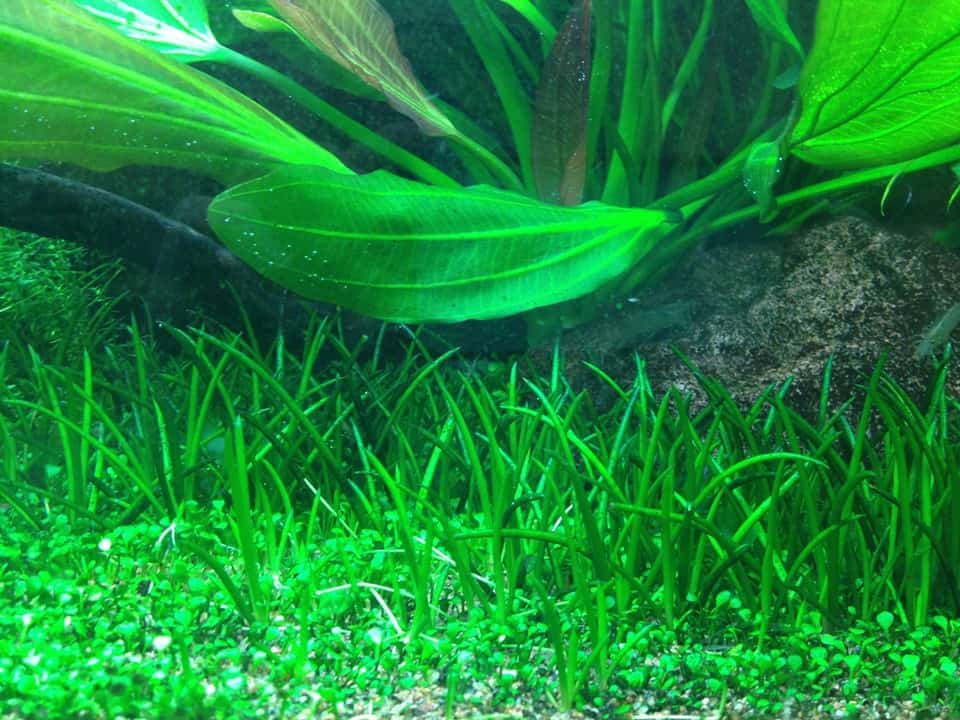
Littorella uniflora is a lovely, low-growing plant. It can be found in the wild in North and South America and Europe. And it’s very easy to grow and maintain.
Position small clumps close together, and they’ll create a beautiful carpet across the bottom of your aquarium. Alternatively, individual plants look great between rocks or other features.
It doesn’t need a lot of light – although if it’s available, the leaves will grow longer. It likes water with a neutral pH of 6 or 7.
It can tolerate a wide range of temperatures, from 34 to 79 degrees Fahrenheit. It grows relatively slowly, but extra carbon dioxide will speed things up. A dose of fertilizer every so often will give you stronger growth too.
11. Lilaeopsis novae-zelandiae
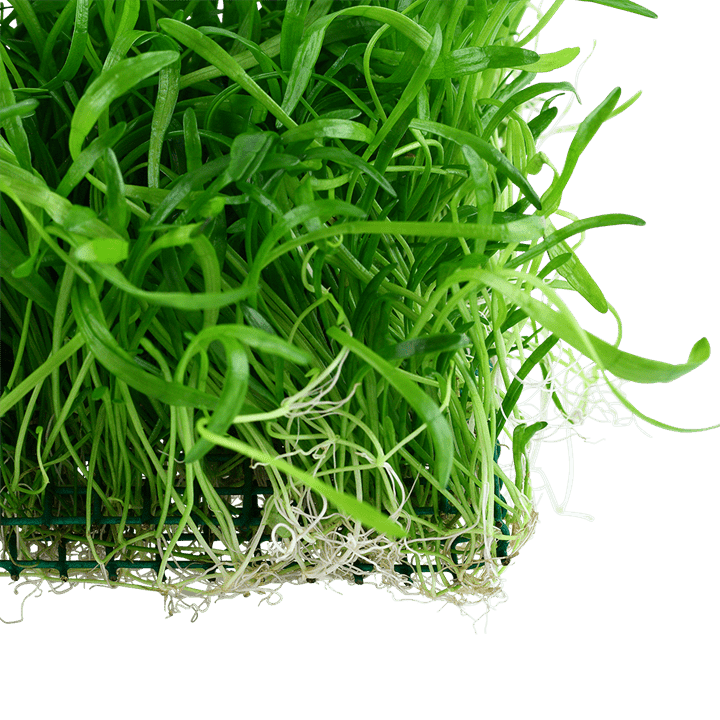
The second plant from the genus Lilaeopsis to make our list, Lilaeopsis novae-zelandiae is a great option for fast growth. It will put out runners all over the place, quickly forming a carpet over the floor of your tank.
You’ll get the most vigorous growth with high light levels and supplemental carbon dioxide. It likes temperatures of between 64 and 79 degrees Fahrenheit.
It grows at a slow to medium rate, reaching a maximum height of between 2 and 4 inches. Plant it in clumps towards the front of your aquarium, and it will create a beautiful effect of wild grasses.
12. Micranthemum “Monte Carlo”
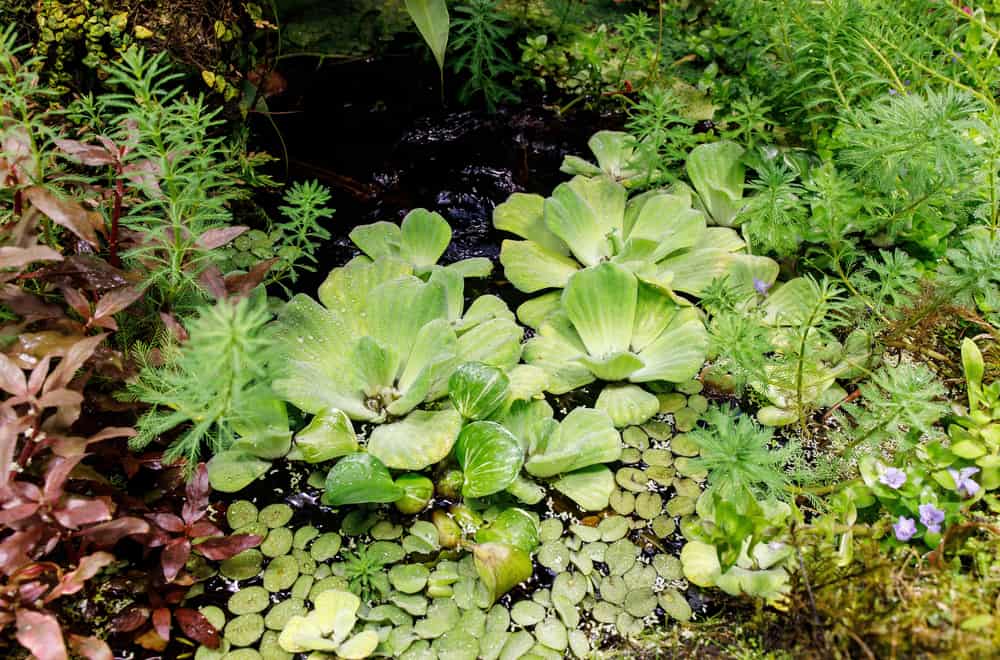
Micranthemum “Monte Carlo” is another fast growing carpeting plant. It has creeping stalks with light green, rounded leaves that make a very attractive bed on the aquarium floor. And it has less stringent requirements than some of the other options on our list.
In the wild, it’s found in the lakes, streams and bogs of Argentina. It can grow both in waterlogged ground and totally immersed in water.
It doesn’t need as much light as plants like Hemianthus calitrichoide, although you’ll still get the thickest foliage with decent light levels. But it will appreciate extra carbon dioxide. The temperature should be between 68 and 77 degrees Fahrenheit. And the pH needs to be between 6 and 7.5.
It will grow to a maximum height of between 2 and 4 inches. It feeds both from the roots and through the column of the plant.
Ready to choose your aquarium plants?
That brings us to the end of our look at the best carpeting plants for an aquarium! We hope you’ve enjoyed learning more about the different varieties and their requirements.
Whether you’re an expert aquarist or just starting out, there’s an option for you here. Just take care to match your plants’ needs to the conditions in your aquarium, and they’ll thrive.
We hope you’re soon enjoying the sight of a beautiful living carpet in your aquarium!
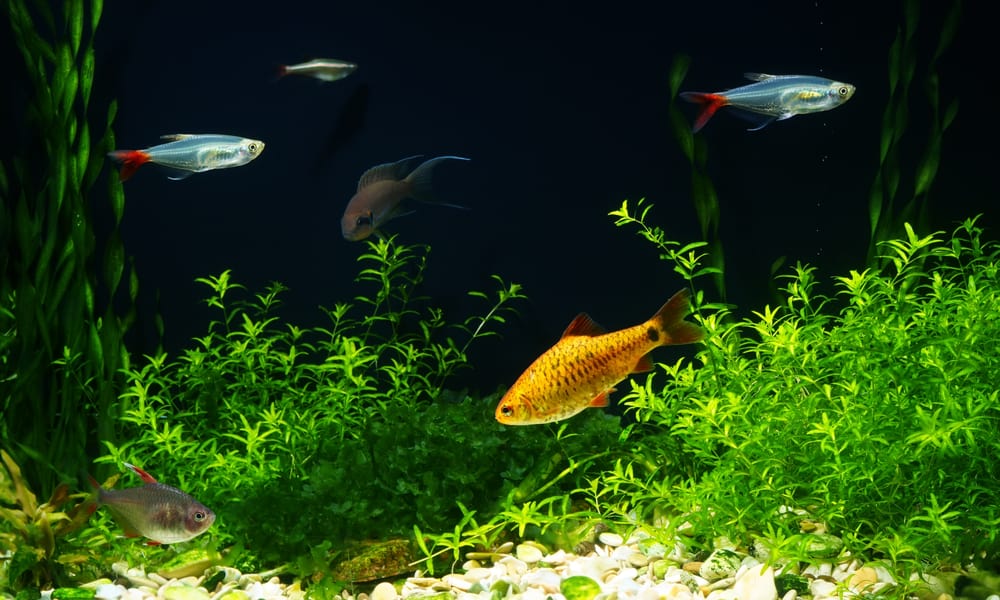
The plants are so beautiful.